Tips for first-time train travel
-
Published
Whether you’re a visitor to Great Britain or just someone who isn’t familiar with travelling on the railway, this handy guide on how to use the train in Great Britain has you covered. Let us take you through the process of searching for your ticket all the way to stepping off at your destination!
Buying a ticket
If you’re planning a trip by train, you’ll need to know where to go first! Once you have an initial idea of this, you can pop onto the Railsmartr website. Let’s say that we’re going to go from London to York:

You need to pop in the details of where you’d like to go to and from, when you’d like to go and how many of you are taking the train. There’s also the option to add in Railcards. If you’re not a regular traveller, you probably don’t have one of these! If you’d like to know more about them though, just click here.
Once you have all of your details in, simply press ‘Get train times and fares’!
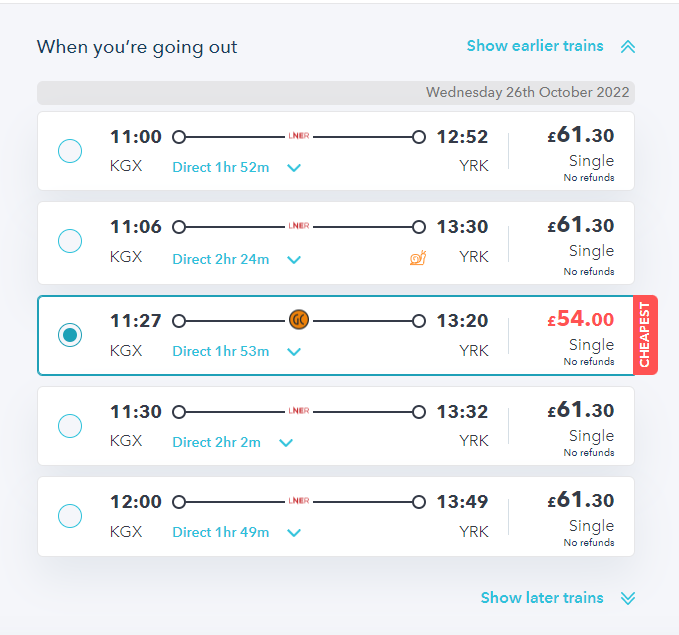
Now you’ve been presented with a list of trains that you could take. Here at Railsmartr, we’ll always offer you the cheapest ticket for your journey, but this brings us to a bigger question:
Which ticket is right for me?
Knowing which ticket you need to buy is one of the most important parts of how to use the train in Great Britain, but one of the things that can also put people off. Rail tickets in Great Britain can be confusing, but here’s our summary of which ticket to buy, in a nutshell:
| Type of ticket | Is it for you? |
| Advance |
|
| Super Off-Peak |
|
| Off-Peak |
|
| Anytime |
|
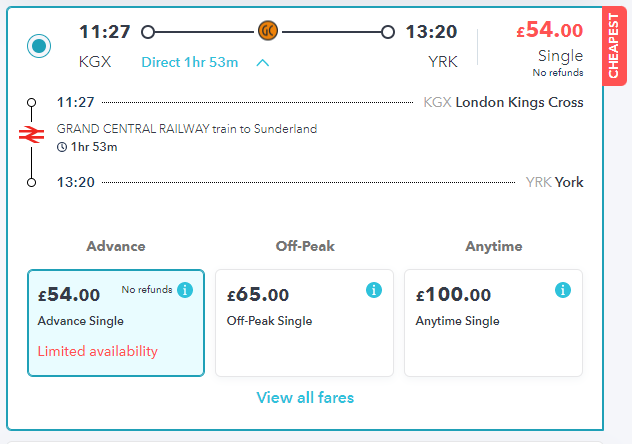
Let’s take a look at our options! When you click on the price for each train, it’ll give you a selection of fares to choose from. We can see that our cheapest option is £54 if we’d like to commit to that train. If we choose to ‘View all fares’, we can also see First Class tickets. When you’re ready to buy, just select your ticket!
If your train offers allocated seating, we’ll reserve you a seat. Just tell us what your preferences are (direction of travel, table seat, window or aisle) and we’ll do our best to meet them.
What will my ticket look like?
In Great Britain, you can choose between a paper ticket or an eTicket. A traditional paper ticket looks like this:
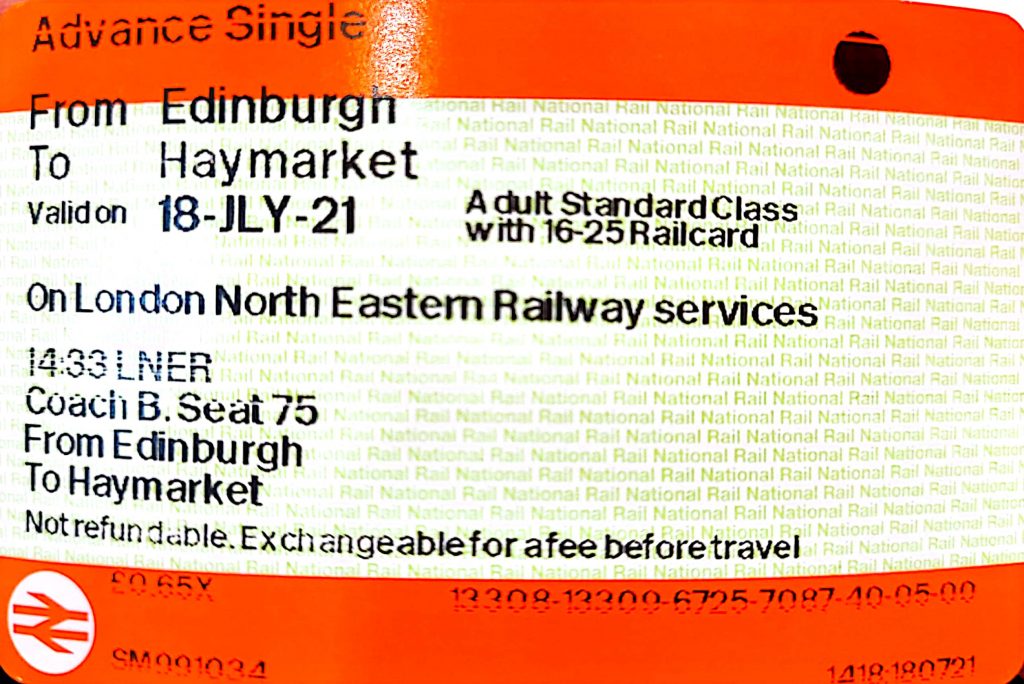
These are available from Railsmartr if you select to collect your tickets from the station. To do this, you’ll need to visit a ticket machine before your journey, pop your bank card in and enter a unique code to collect them.

eTickets look a little bit different. We’ll email these to you and you can use them however you’d prefer! You can show them to the conductor on your phone, save them to Google Wallet/Apple Pay or print them out at home. Instead of inserting this kind of ticket into a ticket gate, just scan the barcode at the top.
Choosing which class to travel in
Our next part of how to use the train covers picking which class to travel in. If you’re travelling a long distance, then First Class may seem like a sensible option. For example, LNER offers a complimentary food and drinks menu as well as larger and more comfortable seats. Here’s what First Class looks like on one type of TransPennine Express train (top) and LNER train (bottom).
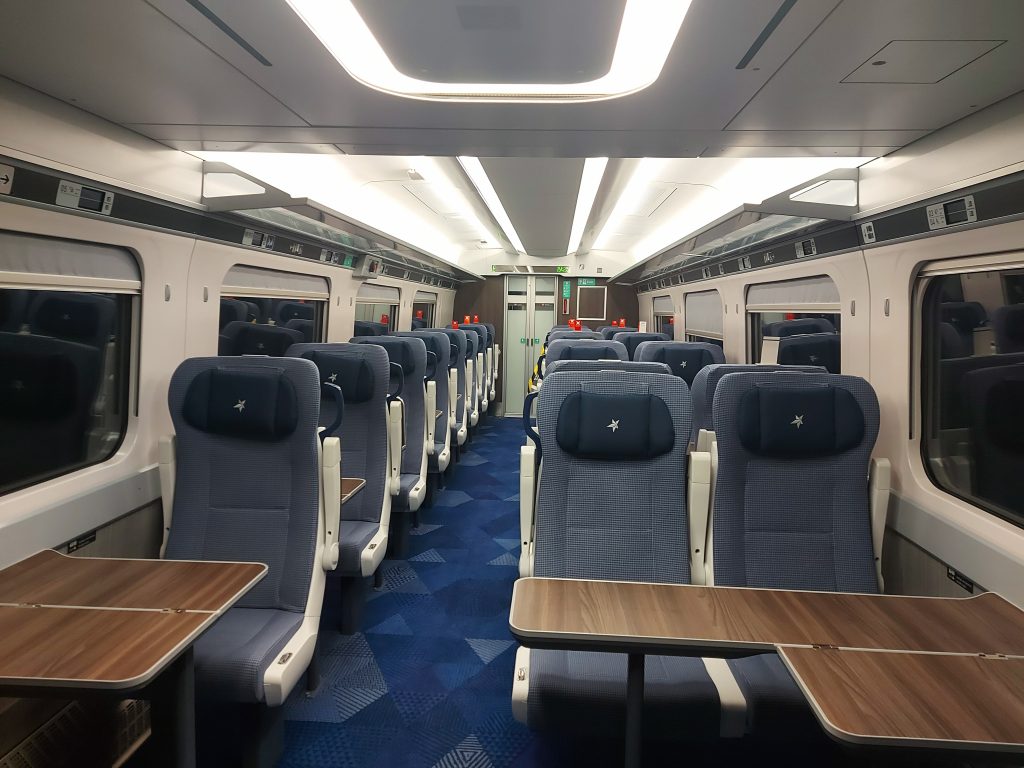
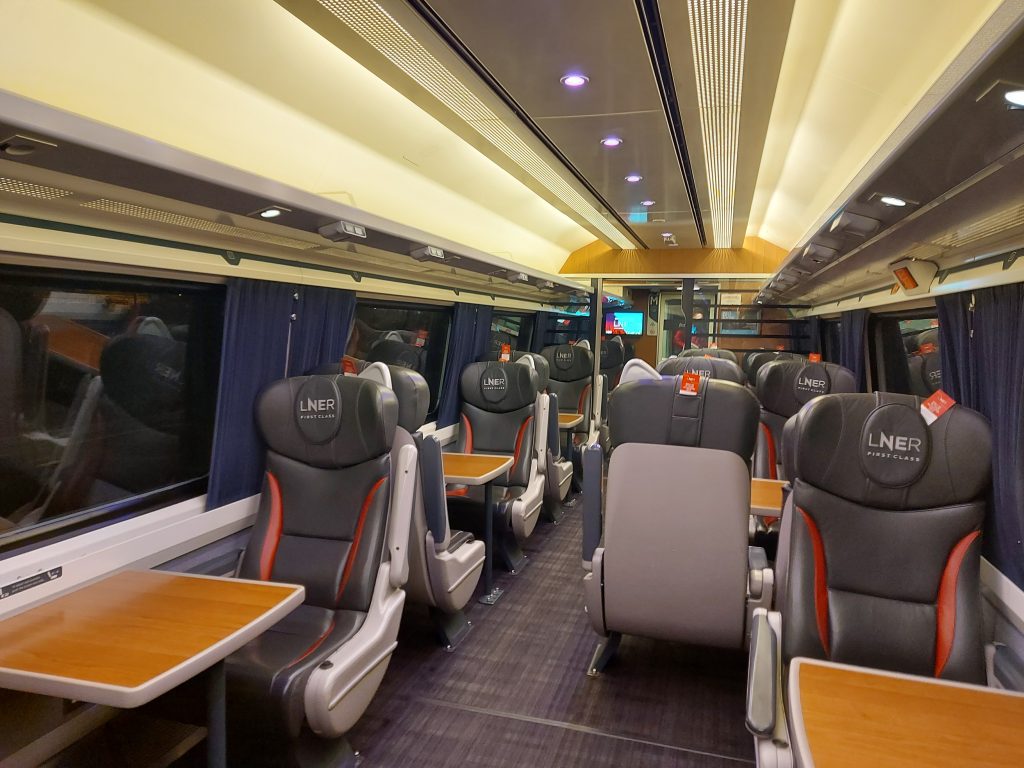
Over shorter distances, it may not be worth it. Operators such as South Western Railway and Southern mostly offer First Class to increase your chances of getting a seat, for example. If the difference in price is only very small, then go for it! Otherwise, save your pennies.
Can I upgrade to First Class?
This very much depends on the type of train you’re using and when you’re using it! On weekdays, it isn’t always possible to upgrade on the train for a fixed fee. Instead, you’ll be charged the difference up to the First Class fare, which could be very expensive. On a weekend though, it’s often possible to just take a free seat in First Class and wait for the conductor to upgrade you.
Here’s our handy guide to upgrading on the train:
| Operator | Information on upgrading |
| Avanti West Coast | Upgrade on board to ‘Standard Premium’ seven days a week. Up to £30 per person. |
| CrossCountry | Upgrades are available with flexible tickets only |
| East Midlands Railway | Upgrade on board at weekends for £12 if you have a Super-Off-Peak, Off-Peak or Anytime ticket. |
| Great Western Railway | Weekend First upgrades are available on board, starting at £10. |
| Greater Anglia | Upgrade on board on weekends and Bank Holidays for £10. |
| LNER | Upgrade on board for £35 or £45 at weekends and during Super Off-Peak times. |
| ScotRail | Upgrade on board for £5 on ‘eXpress’ services or £15 on ‘Intercity’ services. |
| South Western Railway | Upgrade on board on weekends and Bank Holidays for between £5 and £15. |
| TransPennine Express | Upgrade on board on weekends and Bank Holidays for £10, £15 or £20. |
Accessibility
All trains in Great Britain are accessible to wheelchair users and those who may have other mobility issues. Every train will have at least one wheelchair space and an accessible toilet available on board. Here’s an example from a train operating between London and Hull:
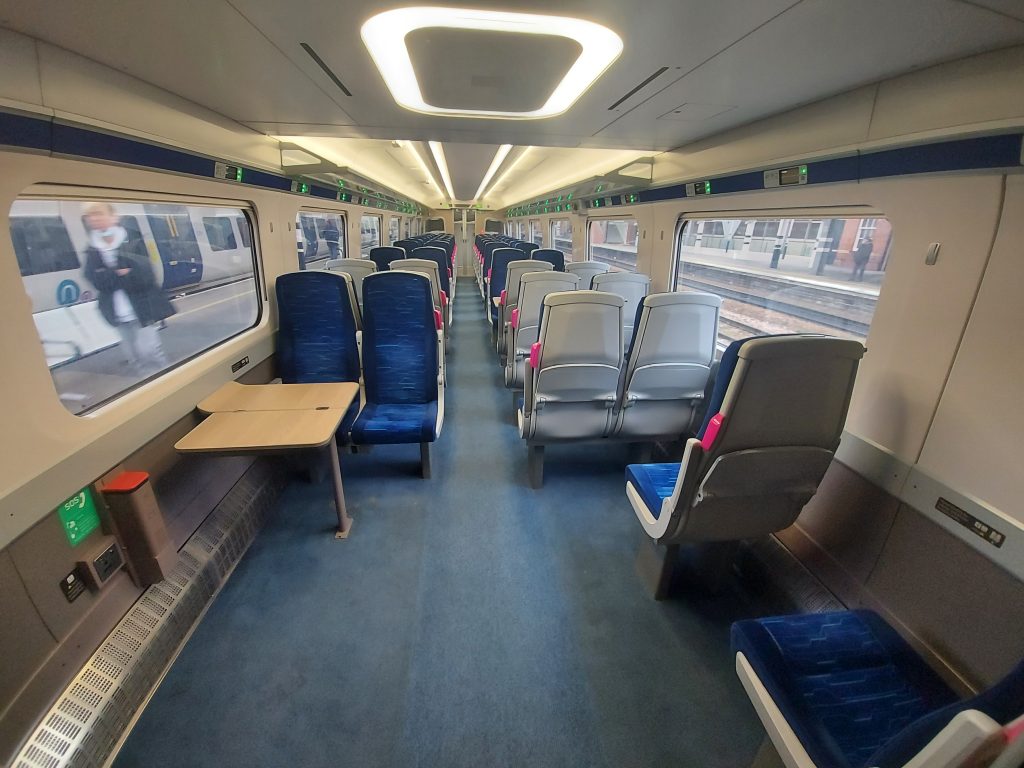
If you’re elderly, disabled or have another invisible disability, then you’re able to pre-book assistance for your journey. Whether you need a ramp to get your wheelchair on board, some help with your luggage or guidance around busy stations, then staff are on hand to assist.
Click here to find out more about assistance on the train and at stations.
Finding your platform
So, we’ve looked at how to prepare for your journey and buy your ticket, and now you’re at the station. Some stations may seem tricky to get around and you need to find which platform your train is on. So, what do you look for?
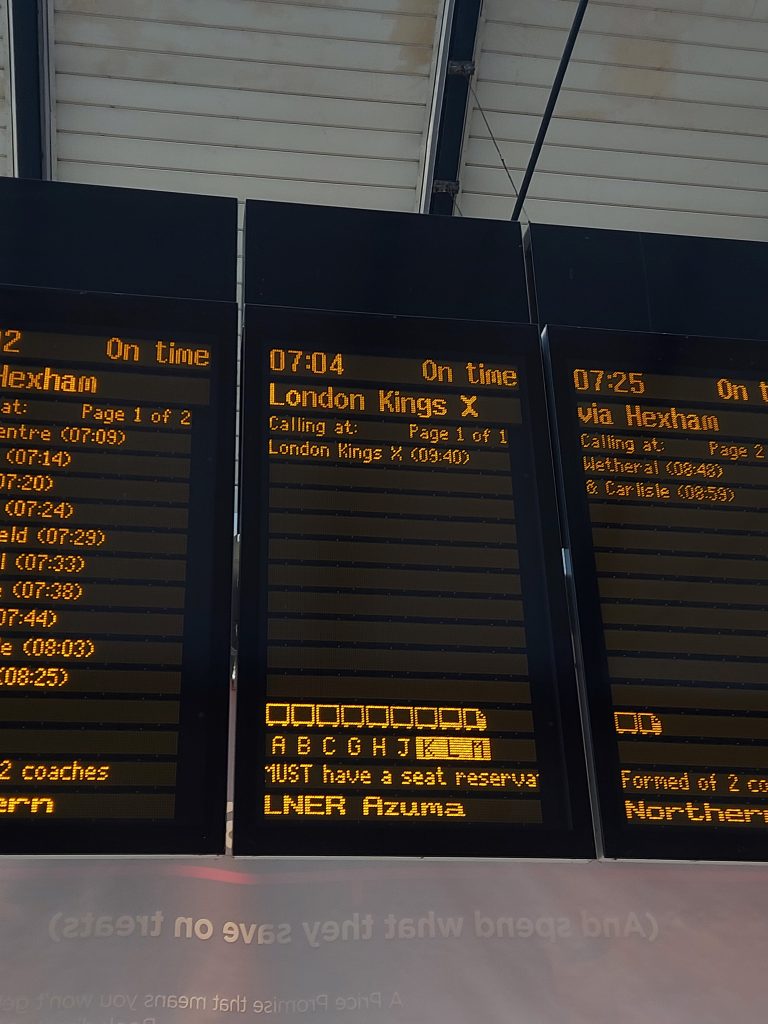
Keep an eye out for information screens like these ones if you’re at a station with lots of platforms. They’ll alternate between saying whether your train is ‘on time’ (or any delay) and will give you the platform number, too. If they don’t show a platform number yet, don’t worry. This just means that your train isn’t ready for boarding just yet.
When you know your platform, follow the signage or ask a member of staff to help with locating it. Make sure you have your ticket ready, as you might need to insert it or scan it at a ticket gate. Staff will be on hand to help with this, too.
Finding your carriage
If you have a reserved seat, then you’ll need to know where to find the right carriage! All trains with reserved seating will have the carriage letter either on the door or by the door. Most modern Intercity trains have a detailed display showing the destination and carriage letter, such as these ones:
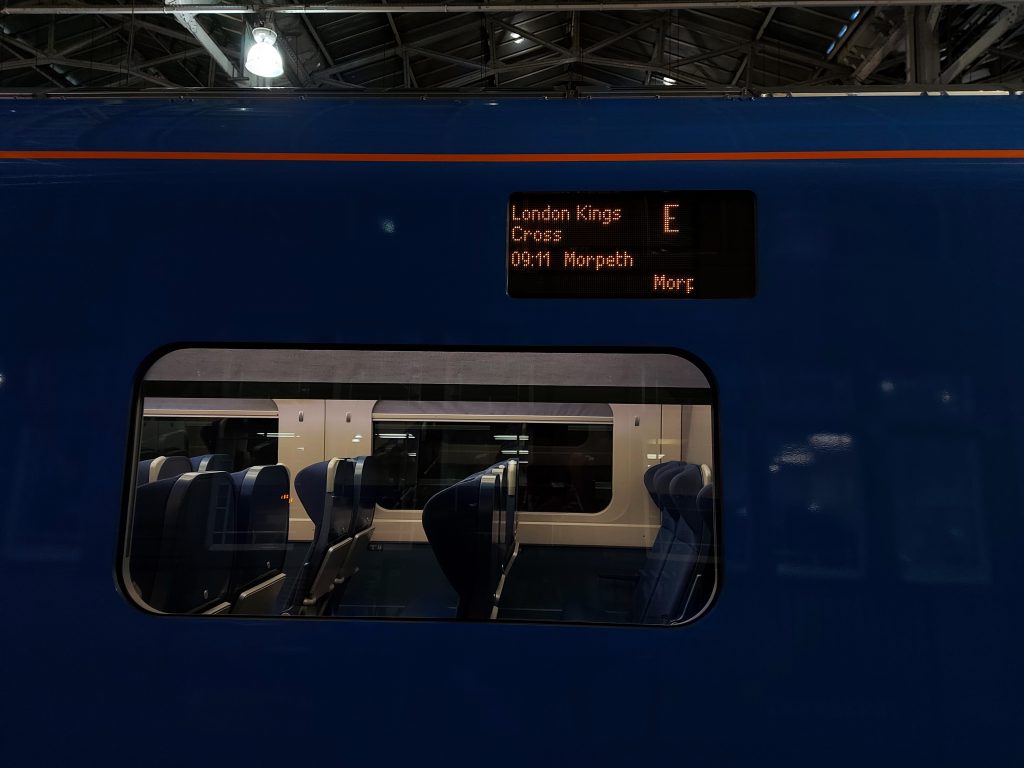
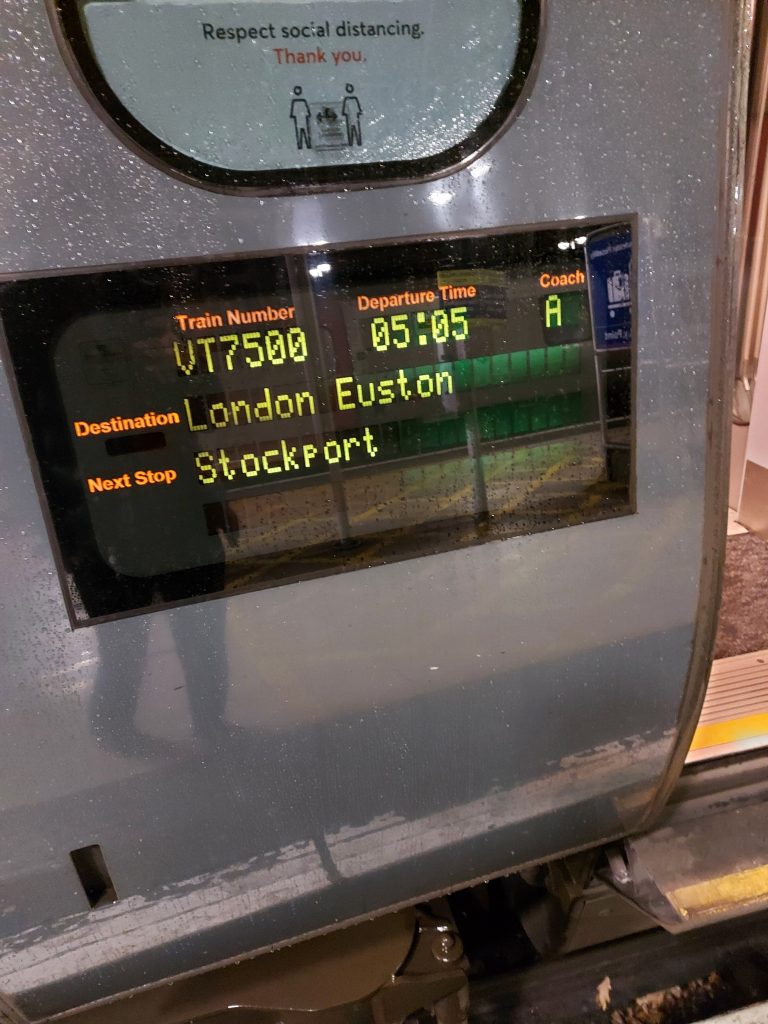
How do I know where to wait?
If it’s your first time using the train, it can be overwhelming when you’re waiting on a busy platform. Knowing where to stand can make your life a lot easier! On the platform, you’ll find displays that will show you the order of the carriages on the train. They might also show you where the best place is to stand. Let’s take a look at an example:

This shows us that Coach A is at the front of the train and that we should wait in Zone 15, which will be marked on the platform. When the train arrives, we’ll be standing in the right place without having to rush to the carriage that we need.
Finding your seat
Now that you’re on board, you need to find your seat! If you have a seat reserved, then it’ll be marked with either an electronic display or a paper ticket in the seatback. On some routes, the seat reservations will be marked with lights, such as on this LNER train:

If a light is green, it isn’t reserved and anyone can sit in it. If it’s yellow, it might be reserved later, so you should check the screen to see where it’s reserved from. A red light means that it’s currently reserved. If you’ve reserved a seat, you’re probably looking for a red one!
On some trains, you won’t have a seat reserved, nor will it be possible to do so. In this case, simply pick any free seat.
What do I do with my luggage?
If you have any luggage, make sure it’s stored correctly. Small bags go under your seat, larger cabin-style bags go above your head, and the largest items go in the racks at the ends of the carriage. You’re not allowed to block aisles, or doors or place items on seats.
Onboard experience
Great, you’ve mastered how to use the train and now we’re on the move! So what now?
- Have your ticket ready. It might be checked during the journey!
- Listen to any announcements. These will keep you up to date about where you are and may contain important information about your trip.
- Get connected! Many trains have free WiFi or charging sockets. You may find the sockets to be well-hidden, such as under a table ledge or a seat.
Will there be anything to eat?
Some trains offer a food and drinks service. This could come in the form of a trolley, a buffet car or delivery straight to your seat! Let’s take a look at who offers what:
| Operator | Food and Drinks Offer |
| Avanti West Coast | On-board shop and at-seat service using an app. |
| CrossCountry | Trolley service on most services during the day. At busier times, the trolley might operate as a ‘static’ service. |
| East Midlands Railway | A buffet car is available on trains between Sheffield/Nottingham and London. |
| Grand Central | A buffet car is available on all services. |
| Great Western Railway | A trolley service is available on most long-distance services. Pullman dining is also provided on a select number of trains. |
| Greater Anglia | Buffet car provided on most trains from Norwich to London. |
| LNER | Buffet cars are available on all trains, as well as at-seat service by scanning a QR code at your seat. |
| Lumo | Pre-order on the Lumo website. A trolley service is also available. |
| Northern | Trolley service operates on certain services between Leeds and Carlisle only. |
| ScotRail | On most long-distance services, a trolley service is available. |
| Transport for Wales | A trolley service is available on some long-distance trains. |
| TransPennine Express | You’ll find a trolley service between 0700 and 1900 Monday to Friday on trains between Manchester Piccadilly and York, and Manchester Piccadilly and Doncaster. All trains between Manchester Airport and Glasgow/Edinburgh have a trolley service at all times. |
Reaching your destination
You’re almost there! When you get close to your destination, there will be an announcement on board the train. Make sure you have everything with you, such as bags, phone chargers and anything you’ve stored in luggage racks.
Keep your ticket handy too, as you might need it to leave the station. There’ll be signage pointing you to the exit, but staff will be happy to help if you’re unsure. If you need to catch another train, just look out for the information screens we mentioned earlier!
We hope you’ve enjoyed the trip. Welcome to the world of environmentally friendly rail travel.
If you need a refund
If you have a flexible ticket such as Off-Peak, Super Off-Peak or Anytime, then you can claim a refund through your Railsmartr online account if you have one. If you have an Advance ticket, then please contact us.